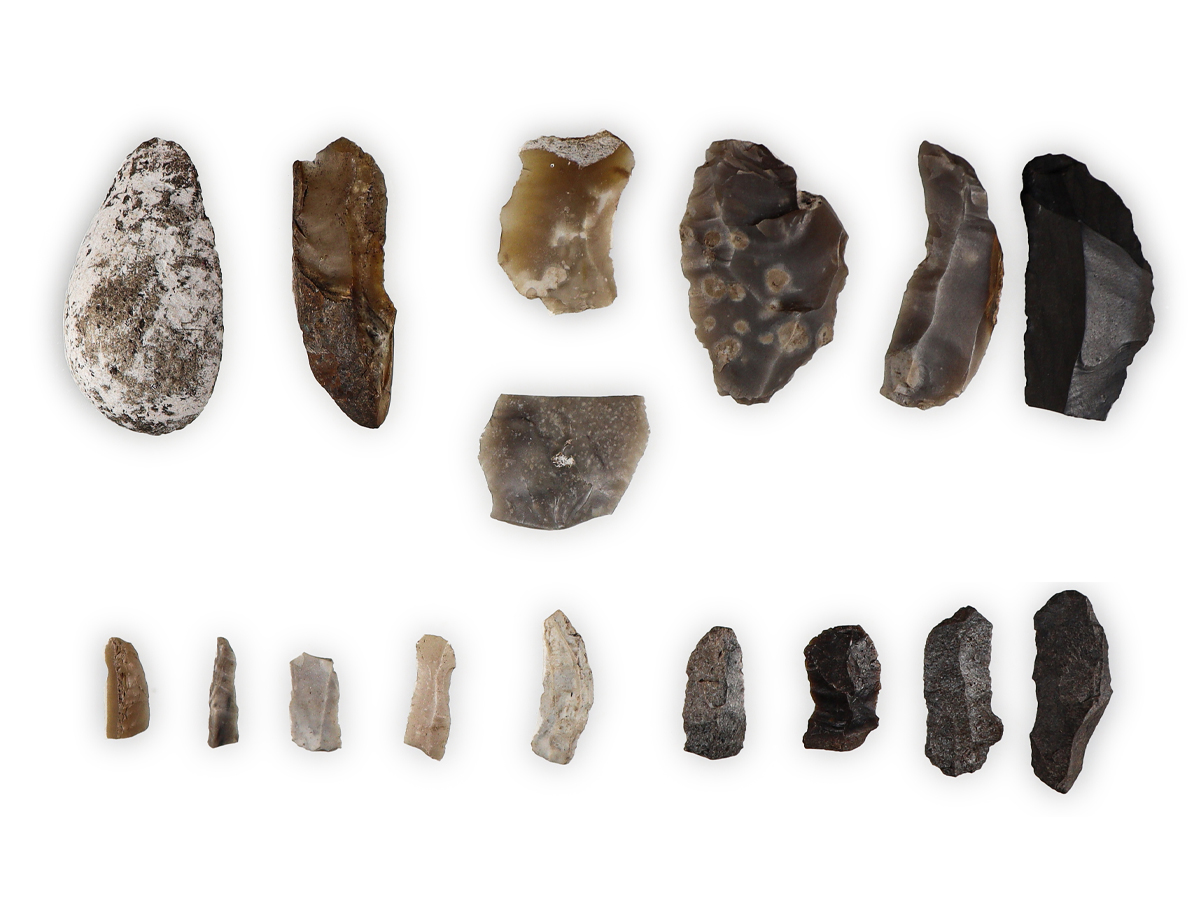Prehistoric Flints and Lithics
Description
These stone tools are from the moors above Nelson and Colne in Lancashire. They range in date from around 7000 to 400BC, spanning 6500 years of Lancashire's prehistory. These blades and scrapers had a variety of different uses ranging from hunting to food and animal skin preparation. Some would have been mounted in a handle of antler or wood, others used as they are.
Stone tools are the most abundant objects we have from the people that inhabited Lancashire before the Roman invasion of Britain in AD43. From the Bronze Age (2300 - 800BC) onwards metals, copper alloys in particular, gradually began to displace stone as the principal material for tools and weapons, but the use of stone continued well into the Iron Age (800BC – AD43).
The tools in this assemblage are made of either flint or chert. Flint is found in Lancashire through glaciers and in beach pebbles, it was also imported into the county for use in stone tools. Chert is found in Lancashire in limestone and often contains tiny fossils. There is usually a mix of both on prehistoric Lancashire sites.
Details
- Accession number
- LANMS.1978.35.4
- Category
- Archaeology
- Materials
- flint
chert
On display
50 Objects Exhibition at Helmshore Mills Textile Museum 6 June - 31 October 2025. Search www.lancashire.gov.uk for Helmshore Mill opening times.
